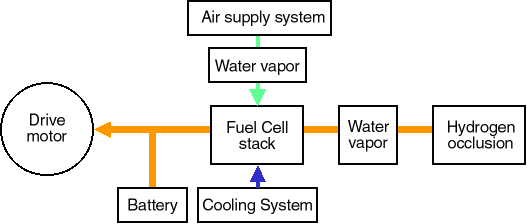Honda Introduces Prototype Fuel Cell Electric Vehicles
September 6, 1999, Japan
Tokyo, September 6, 1999 --- Honda Motor Co., Ltd. today introduced the FCX-V1 and FCX-V2, two electric vehicle prototypes powered by fuel cells, the much-anticipated next-generation power plants for automobiles.
The FCX-V1 uses hydrogen fuel and is equipped with a fuel cell stack manufactured by Ballard Power Systems, Inc., which employs a hydrogen occlusion alloy for fuel storage.
The FCX-V2 employs a methanol-fueled fuel cell stack manufactured by Honda itself, incorporating a Honda-developed reformer for extracting hydrogen.
Both of these prototypes feature the Honda EV Plus body, specially designed for electric vehicles, as well as Honda's own small yet highly efficient drive motor and control system.
Honda has been striving to develop fuel cell vehicles in view of possible future changes in the fuel infrastructure and to accumulate engineering expertise, and is planning to make one commercially available by the year 2003.

FCX-V1

FCX-V2
Specifications
FCX-V1
| Motor | Permanent magnet AC synchronized motor (Honda) |
| - Power Output | 49 kW |
| Fuel cell stack | Solid polymer PEFC (Proton Exchange Fuel Cell) manufactured by Ballard Power Systems Inc.) |
| - Power Output | 60 kW |
| Fuel | Pure hydrogen |
| - Storage system | Hydrogen occlusion tank (La-Ni5) |
FCX-V2
| Motor | Permanent magnet AC synchronized motor (Honda) | |
| - Power Output | 49 kW | |
| Fuel cell stack | Solid polymer PEFC (Proton Exchange Fuel Cell) (Honda) | |
| - Power Output | 60 kW | |
| Fuel | Methanol | |
| - Reforming system | Auto-thermal system | |
FCX-V1 System Schematic

FCX-V2 System Schematic
